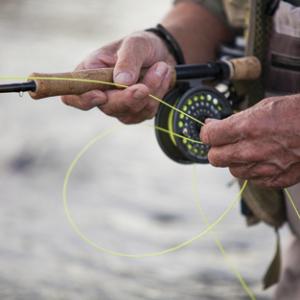The Atlantic States Marine Fisheries Commission has selected Option 5 of the Summer Flounder Management Plan for the 2017 summer flounder season. This option allows Delaware, Maryland and Virginia to have a 17-inch minimum size with a four-fish bag limit and a 365-day season. New Jersey will have a 19-inch minimum size limit, a three-fish bag and a 128-day season along the Atlantic Coast. In Jersey’s portion of the Delaware Bay, the minimum size drops to 18 inches with the same three-fish bag and 128-day season.
All things considered, this is the best we could hope for. We did have to go up 1 inch in size, but we maintain our four-fish bag and 365-day season.
These new regulations will have to be approved by the National Marine Fisheries Service, signed by the secretary of Commerce and adopted by the state before they become law. While anything can happen during this process, I suspect we will have a 17-inch minimum size limit in place before the first flounder of 2017 is caught out of the Lewes-Rehoboth Canal.
IGFA rules changes
The International Game Fish Association has made changes to several rules concerning world record fish. While most anglers do not go out with the idea of catching a world record, some are just lucky enough to bring in a qualifying fish.
As a case in point, many years ago when my two sons were small children, we participated in the Order of the Jungle Cock’s weekend father-son fishing trip. Along with classes on fly tying, casting and general fishing instruction, the kids and their fathers went fishing for stocked trout in a pond and nearby stream.
Roger and I were fishing in the pond using a combination of one corn kernel and a tiny piece of earthworm on a very small hook when I had something take my bait and head for parts unknown. I was using a very light-action rod with 4-pound test line. After a prolonged fight, I landed a catfish of gigantic proportions.
The cat weighed more than 20 pounds and was several pounds heavier than the current world record for channel catfish on 4-pound line. I did all the measurements, took the photos and filled out the paperwork to submit my catch to the IGFA. As my luck would have it, someone in Nebraska caught a bigger catfish about a month before I caught mine. No world record for me.
Should you find yourself in the same situation, be aware that the new rules go into effect on April 1.
No one may help an angler fight the fish in any manner, including touching the equipment or the angler. The only exception is preventing the angler from falling.
You may use heavy backing on the reel. The line class will be determined by the first 16.5 feet of line between the backing and the leader.
There are now minimum ratio requirements for line class world records. Any fish entered in line classes up to 20 pounds must weigh at least half as much as the line class. A fish entered in the 20-pound line class must weigh at least 10 pounds. For line classes above 20-pound, the fish must weigh at least as much as the line class. A fish entered in the 50-pound line class must weigh at least 50 pounds.
The IGFA will continue to maintain all-tackle world records for thousands of fish species, but will no longer keep line class, fly line tippet or junior angler records for 45 species. Those no longer eligible include rock bass, white bass, bluegill, black bullhead, brown bullhead, yellow bullhead, white catfish, black crappie. white crappie, freshwater drum, white perch, yellow perch, chain pickerel, American shad, hickory shad, redear sunfish, redbreast sunfish, green sunfish, shortnose gar, spotted gar, black sea bass, Atlantic spadefish and Florida pompano.
There are many other rules that must be followed in order to claim a world record fish, including the length of the leader, the type and numbers of hooks, and the breaking strength of the line. I suggest joining the IGFA at IGFA/memberships.aspx. for all the rules as well as the current world record holders.
Fishing report
Not much going on in saltwater as the wind keeps blowing. We did have a few scattered reports of tog when the boats can sneak out.
Freshwater anglers are catching bass, pickerel and crappie in the local ponds and upper reaches of the tidal rivers. The tidal rivers also produce white and yellow perch. The best of the yellow perch bite seems to be at the top of the Chesapeake Bay near Perryville. Live minnows, shiners and earthworms remain the best baits.






















































